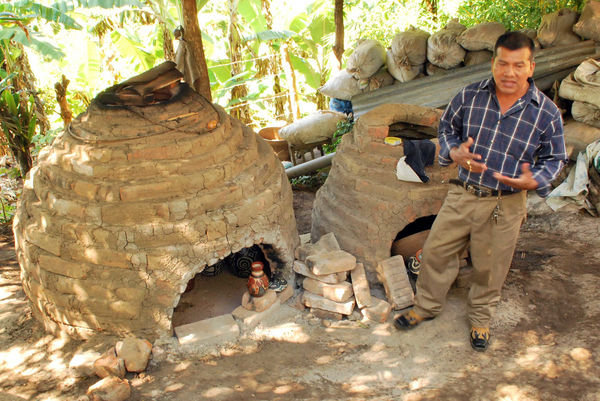Nicaragua’s Wheel of Fortune
By Rick Steves
While Europe is my passion and the focus of my work, Central America has long held a fascination for me. I took my first trip to the region in 1988, during El Salvador’s civil war. Over the years, I’ve returned to Nicaragua and El Salvador several times; here are some impressions from my most recent trip.
Driving an hour outside of Nicaragua’s capital, Managua, we visited the town of San Juan de Oriente, where 90 percent of the people are indigenous (of native rather than European descent). The locals are descendants of the Nahuatl Indians, who settled here some 5,000 years ago.
For centuries, the town’s economy has been based on pottery. We met local artisan Valentín López, who is passionate about keeping pre-Colombian art alive through his craft. As we sat in his workshop, he danced while his son played the marimba (a xylophone-like wooden instrument favored among native Nicaraguans). And as he danced, he explained the connection of his craft to his indigenous past.
We gathered around the potter’s wheel, and he demonstrated the traditional way pottery is made, painted, and burnished. It’s all organic: clay pounded by bare feet, brushes made of a woman’s hair, and giant seeds as burnishers. I saw how in tune these potters are with nature. In the US, potters order clay on the phone. But here, they hike to the clay pit and gather it themselves. As his son kick-started the potter’s wheel, Valentín noted there is no electricity involved — “The power is rice and beans,” he joked. When the boy quickly got the wheel ramped up by using his muscular leg, Valentín added, “This town produces very good soccer players.”
They turned the wheel over to me, and I jumped at the opportunity to humiliate myself. Climbing into the potter’s chair is like straddling a strange animal. I pushed the heavy stone wheel with my feet. It was awkward. With images of Fred Flintstone trying to start his car, I struggled to get it going. My foot nearly got pinched and dragged by the rough wheel under the brace of the table — which would have made me probably the first person to lose a leg to a potter’s wheel.
The potter’s son helped me get the wheel turning with a full head of steam, then slammed a blob of clay onto my spinning worktable. I cupped it, and it wobbled. He showed me how to be gentle with the clay. As he trickled some water on the blob and guided my fingers, the clay came to life. But my creation was still a clumsy piece of work; eventually (and effortlessly) it was made elegant by my teenage teacher.
Glancing down the row of eight stations, all under the shade of a corrugated tin roof, I imagined this cottage industry in full swing. I came to appreciate the timelessness of the technology. The advent of plastic must have done to pottery what the advent of steel did to blacksmithing. Indigenous people want vessels that are of the earth, made by hand, and ornamented with the iconography of their ancestors. Though decimated by European colonialism, there is still a native pride throughout the region. As long as there are indigenous people — even if there are no tourists seeking souvenirs — there will be potters in Latin America turning their wheels of fortune.
The struggles of native peoples are widespread throughout Latin America today. They are often the ones discriminated against in schools, the workforce, the judicial system, and so on. If a mestizo (mixed-race Latin American) loses his temper or does something violent, rather than say, “The devil made me do it,” he’ll say, “Se me salió el indio” (“The Indian just came out of me”). Even to call someone indigenous is regarded by some as an insult.
I grew up fascinated by the revolutionary, Pancho Villa, but I always considered him a Mexican bandit. Native Latin Americans refer to him as a hero who stood up against white dominance. As long as indigenous Latin Americans are kept down, my hunch is that the headlines will be filled with the Pancho Villas of the 21st century as native peoples stand up for their rights in an aggressive — and often uncompromising — modern world.

